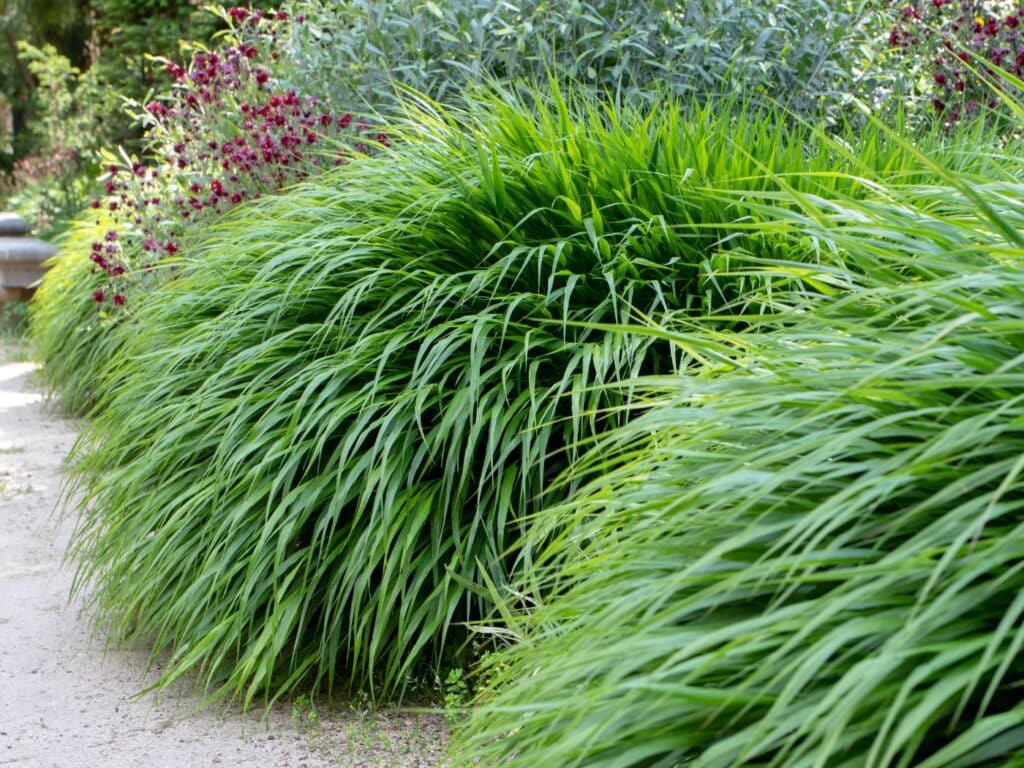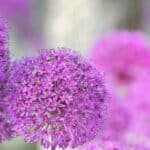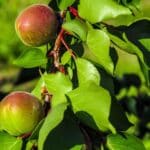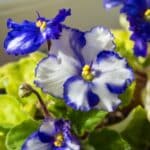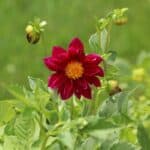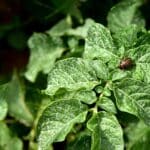Japanese forest grass (Hakonechloa macra) is an excellent ornamental grass to consider if you want something striking that will flourish in shady areas.
This vibrant perennial grass will brighten up any garden space with its vivid green leaves, and it can be used as an accent plant in woodland gardens, in containers, or as a garden filler to keep your garden lush and full of texture.
One of the best things about these deciduous grasses is that they are non-invasive. You can safely plant them all over your garden without any environmental risks.
You have come to the right place if you want these cool summer grasses to grow healthy and strong. In this planting guide, we will share some great tips to help you take good care of your beautiful Hakone grass.
Plant Facts
| Scientific name | Hakonechloa macra |
| Common names | Hakone grass, Japanese forest grass, Forest grass, or Golden Japanese forest grass |
| Family | Poaceae |
| Plant Type | Ornamental Grass |
| Height and Width | 1–1.6 ft. tall 1–2 ft. wide |
| Origin | Japan, Brazil Southeast, and the United States |
| Flower colors | Gold/yellow or green |
| Foliage color | Green, variegated, white, or gold/yellow |
| Sun Exposure | Dappled sunlight, deep shade, or partial shade |
| Soil Type & pH | Well-drained, neutral to slightly acidic soil in loam or sand |
| Special features | Deer-resistant, disease free, good for container planting, accent plant, border plant, or filler plant |
What Does Japanese Forest Grass Look Like?

Japanese forest grass can look slightly different depending on where you plant it and will change in appearance as the seasons progress.
The more sun these grasses receive, the lighter their foliage color will become. The leaves will be green in bright, indirect light conditions without any direct sun. The green leaves will appear more lime green in partial shade with 3 – 6 hours of direct sunlight. If these leaves receive too much direct sun or are planted in warm regions, you can experience scorch marks on the leaves.
This deciduous grass is a slow grower and will gradually sprout in spring to produce vivid, leafy green leaves that can grow up to 2 feet tall.
In summer, the leaves will range from solid green to golden colors, and delicate flowers will start appearing from mid-summer. These flowers are tiny and usually take a lot of work to spot.
By fall, the foliage will transform into copper-orange tones, and the leaves will slowly start dying back for winter.
Where Does Japanese Forest Grass Grow?
This beautiful forest grass is native to eastern Asia, where it originally grew on rocky cliffs in the mountains of Japan. These grasses grow wild in moist woodlands and wet rocky cliffs.
They prefer cool summer climates and are suitable for USDA zones 5 – 9, but they can tolerate colder zone 4 if they receive lots of protection from harsh elements. It won’t survive in extreme heat or dry conditions.
The grasses can be used inside garden beds but will also take well to containers.
How to Grow Japanese Forest Grass
These perennial grasses can be easy to grow if they are established in a suitable location with the right conditions. Here is a quick look at how to grow this fantastic grass variety.
Propagation
Most cultivars of Japanese forest grass don’t produce viable seeds and, as such, should be propagated by dividing the clumps into smaller pieces.
These grasses spread via rhizomes, producing large clumps up to 3 feet wide. It is best to divide these clumps in spring or fall, but they should only be divided if the plant is mature.
To propagate Japanese forest grass, you can dig out the rhizomes and cut the clumps into halves or smaller bits.
After cutting the clumps, you should plant them in prepared soil with moist conditions so the rhizomes can recover.
Soil
Hakone grass can be planted in any well-drained soil, and it will flourish in humus-rich soil with lots of organic matter. This grass can grow well in average to slightly acidic soil types but won’t tolerate heavy soils or saturated conditions.
Pruning
Gardeners love this beautiful grass because it is a low-maintenance variety that doesn’t require pruning or additional care. You only need to remove the dead leaves as they die and turn yellow for winter. Some gardeners wait for the winter kill to transform the grass plume before pruning the dead leaves.
It is usually best to prune Japanese forest grass in late winter or early spring, just before the new shoots appear.
How to Care for Japanese Forest Grass
The ornamental grasses are pretty easy to care for once you have them positioned in an appropriate soil and location. Here is a quick look at the best way to care for this beautiful herbaceous perennial.
Water
Unlike many ornamental grasses, this variety isn’t drought tolerant at all. The grass prefers moist soil and should be watered frequently. Even established grasses will only tolerate drought conditions for a short period. It is best to water these grasses about 3 times a week.
Most gardeners will use a thick layer of mulch as a ground cover because this can help conserve moisture in warmer regions.
Sunlight
Unlike many ornamental grasses, this variety isn’t drought tolerant at all. The grass prefers moist soil and should be watered frequently. Even established grasses will only tolerate drought conditions for a short period. It is best to water these grasses about 3 times a week.
Most gardeners will use a thick layer of mulch as a ground cover because this can help conserve moisture in warmer regions.
Temperature and Humidity
These grasses are native to cool regions and prefer cooler summers, and they can even survive frosty winter temperatures as long as the rhizomes are protected with mulch. The grasses should be grown in shaded positions with lots of moisture in warmer regions.
These grasses also love evenly moist soil with high humidity levels.
Fertilizer
The bright green grass can survive without fertilizer as long as it is grown in rich soil. But if you want them to grow faster, you can add some fertilizer during the first might of its growing season.
It is best to use a slow-release fertilizer so the rhizomes won’t be damaged. Potted Japanese forest grass can be fertilized once or twice a month with a soluble fertilizer or plant food.
Pests and Diseases
You will encounter very few pests and diseases with this grass because it is deer-resistant and not too vulnerable.
If you notice any brown spots or marks on the leaves, it is most likely due to sun damage.
The leaves can also become infected with a fungus that may cause issues like grey leaf spot disease, which is quite uncommon.
Japanese Forest Grass Companion Plants
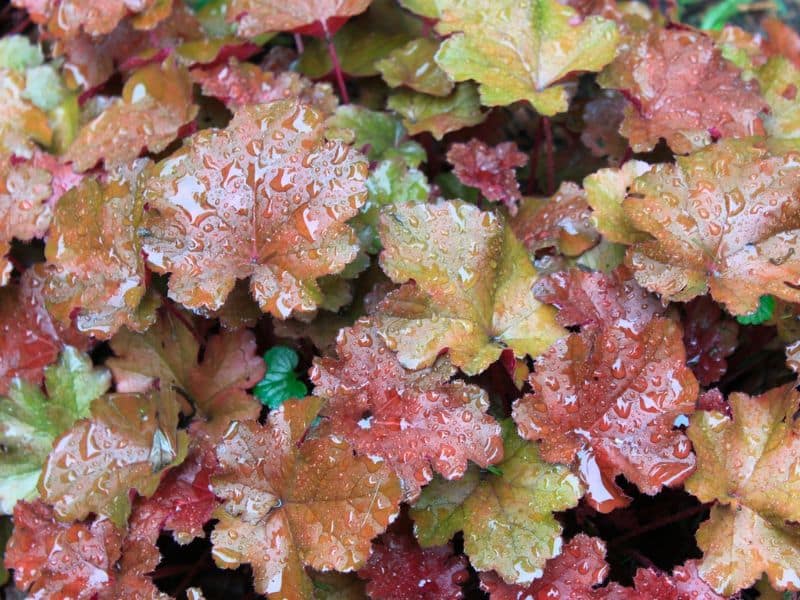
These vivid grasses can look striking all on their own, but gardeners often pair them with other ornamental plants to create more texture and contrast in their garden spaces.
Some of the best Japanese forest grass companion plants include coral bells, dwarf-ragged robins, daylilies, begonias, hostas, coleus, and columbine flowers.
You can also mix other beautiful shade-loving ornamental grasses like mondo grass or Zeeland hair sedge with Japanese forest grass to add more texture and dimension to your garden beds.
Japanese Forest Grass Landscaping Ideas
These slow-growing grasses are striking, great for brightening up garden spaces, and can be used to fill out garden beds. Gardeners love to use them to create the following landscape concepts.
Container Gardens
The grasses can be grown in a large pot because the showy leaves will create a fountain effect as it arches above the container. You can also use this grass to create beautiful mixed containers by growing it along with contrasting plants like begonias or coral bells.
Rocky Retaining Walls
These grasses naturally grow on rocky terraces and are excellent for decorating rocky retaining walls or terraces in gardens. To create an interesting terrace, you can grow them in clumps and other showy shade-loving companions.
Ground Cover
Lots of gardeners use this plant as a ground cover for taller trees and shrubs because the vivid green is great for brightening up the darker areas and will help keep the soil cool and moist.
Common Varieties and Cultivars
There are quite a few varieties of Hakone grass, which come in varying shades ranging from a golden hue to variegated with thin creamy white stripes. Here is a quick look at some of the most common varieties of this popular grass.
- ‘All Gold’
- ‘Nicolas’
- ‘Samurai’
- ‘Fabuki ‘
- ‘Aureola’
- ‘Stripe it Rich’
Conclusion
Hakone grass is an ideal specimen grass for gardeners who might need something for a shaded patio or gardens with lots of tall trees. This is also an excellent grass to establish in a colder region.
We hope our guide gave you many creative ideas for using this grass and that you will have lots of fun caring for and growing these beautiful plants.
Image by [email protected] – photohampster/depositphotos

